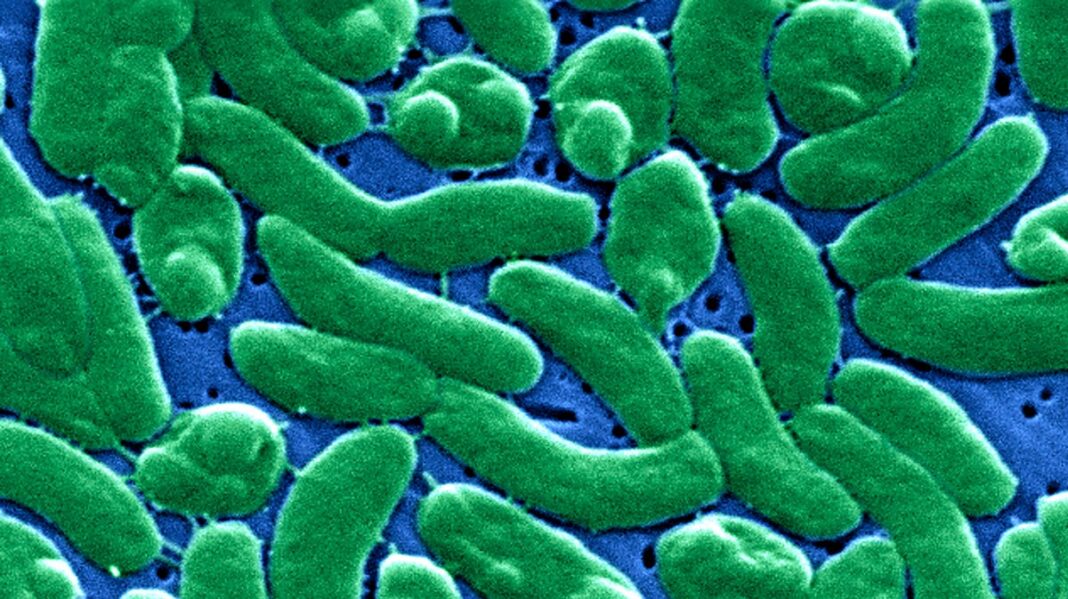Surge in Flesh-eating Bacteria Cases Following Hurricanes in Florida
This bacteria can infect individuals through open wounds like cuts, leading to rapid deterioration of skin and soft tissue.
NAPLES, Fla. — There has been a significant increase in cases of flesh-eating bacteria in Florida following heavy rainfall and flooding caused by consecutive hurricanes, as reported by the state health department.
According to the latest data from the Florida Department of Health, 76 cases of Vibrio vulnificus have been reported in 2024, exceeding the 74 cases recorded in 2022, which also coincided with hurricanes like Ian. This year has also seen 13 deaths statewide linked to Vibrio vulnificus infections.
Vibrio vulnificus is a naturally occurring bacterium that can be deadly, thriving in warm floodwaters caused by hurricanes and tropical storms that mix fresh and saltwater. This mixture can introduce pollutants, sewage, and debris into the water.
The bacteria can infect anyone with an open wound, leading to rapid decomposition of skin and surrounding tissue. Treatment may involve amputation to halt the quick deterioration, and the infection can lead to death.
“The presence of floodwaters increases the risk of Vibrio infections, including Vibrio vulnificus, which can be severe,” the state health department warned in a news release prior to Hurricane Milton making landfall as a Category 3 hurricane, which brought significant flooding and rainfall.
The health department noted that “Vibrio bacteria, typically found in warm coastal waters, pose health risks when swallowed or when open wounds come into contact with polluted water.” They cautioned that heavy rain and flooding may elevate concentrations of these bacteria, especially in brackish and saltwater.
The Tampa Bay region experienced the greatest rise in Vibrio vulnificus cases following Hurricane Helene, which made landfall on September 26 as a Category 4 storm. Before Helene, Pinellas County had no reported cases and only one was noted in Hillsborough County.
As of Sunday, Pinellas County has recorded 14 confirmed cases, while Hillsborough County has reported eight cases, according to the health department’s data.
In September, Florida reported six cases of Vibrio vulnificus before Helene hit, but that figure quickly rose to 23 cases by the end of the month, according to state health department statistics. Following Hurricanes Helene and Milton, the number of confirmed cases climbed to 38.
Every year, around 150 to 200 cases of Vibrio vulnificus are reported to the Centers for Disease Control (CDC). The infection has a fatality rate of about one in five, often claiming lives within one to two days of onset, according to the CDC.
Where Have Flesh-eating Bacteria Cases Been Found in Florida?
In the wake of the recent hurricanes, health authorities issued “no swim” advisories in popular beach areas until testing could confirm bacteria levels. Advisories across Lee County and many beaches in Collier County were lifted last week after tests indicated acceptable bacteria levels based on health guidelines.
While Vibrio vulnificus typically resides in warm saltwater, the increase in cases could also be attributed to prior infections or exposure to bacteria-laden water in canals and other water bodies.
The following is a summary of confirmed cases per county, according to the Florida Department of Health:
- Alachua County: 2
- Bay County: 1
- Brevard County: 5
- Broward County: 1
- Charlotte County: 4
- Citrus County: 3
- Clay County: 1
- Collier County: 1
- Duval County: 4
- Escambia County: 4
- Hernando: 3
- Hillsborough: 8
- Lee: 5
- Leon County: 1
- Okaloosa County: 1
- Palm Beach County: 2
- Pasco County: 4
- Pinellas County: 14
- Santa Rosa County: 2
- Sarasota County: 2
- Seminole County: 2
- Sumter County: 1
- Volusia County: 2
- Walton County: 2
Counties including Charlotte, Citrus, Hernando, Hillsborough, Lee, Pasco, Pinellas, and Sarasota have seen unusual spikes in cases following Hurricanes Helene and Milton, according to the state health department.
What Is Vibrio vulnificus?
The Vibrio vulnificus bacterium can be found in raw or undercooked seafood, as well as in saltwater and brackish water, which forms at spots where fresh and salty waters meet. Flooding spreads this brackish water to areas that are usually unaffected, raising the risk for those working in these waters during and after storms.
While infections from Vibrio vulnificus are uncommon, they can be life-threatening. In some cases, these infections lead to necrotizing fasciitis, a severe illness where the tissue around an open wound begins to die. Without prompt medical attention, this can result in death within just a few days.
Individuals with weakened immune systems, liver issues, or open wounds are at an increased risk for Vibrio vulnificus, according to the Florida Department of Health.
What Are the Symptoms of Vibrio vulnificus Infection?
- Watery diarrhea, often accompanied by stomach cramps, nausea, vomiting, and fever.
- Bloodstream infection symptoms: fever, chills, dangerously low blood pressure, and skin lesions with blisters.
- Wound infection symptoms, which may spread throughout the body: fever, redness, pain, swelling, warmth, discoloration, and discharge.
If you come into contact with floodwaters, it is crucial to seek medical care right away. Medical professionals can use antibiotics to treat infections, but in severe situations, they may have to perform amputations on arms or legs to eliminate dead or infected tissue.
According to the CDC’s website, “Numerous individuals affected by Vibrio vulnificus infection may require critical care or limb amputations.”
To prevent catching Vibrio vulnificus, the Florida Department of Health recommends adhering to several safety measures:
- Refrain from swimming or wading in floodwaters, stagnant water, seawater, or brackish water.
- Protect any open cuts or wounds with waterproof bandages if they contact floodwaters, stagnant water, seawater, or brackish water.
- After exposure to floodwaters, thoroughly cleanse your skin and any open wounds with soap and clean water.

